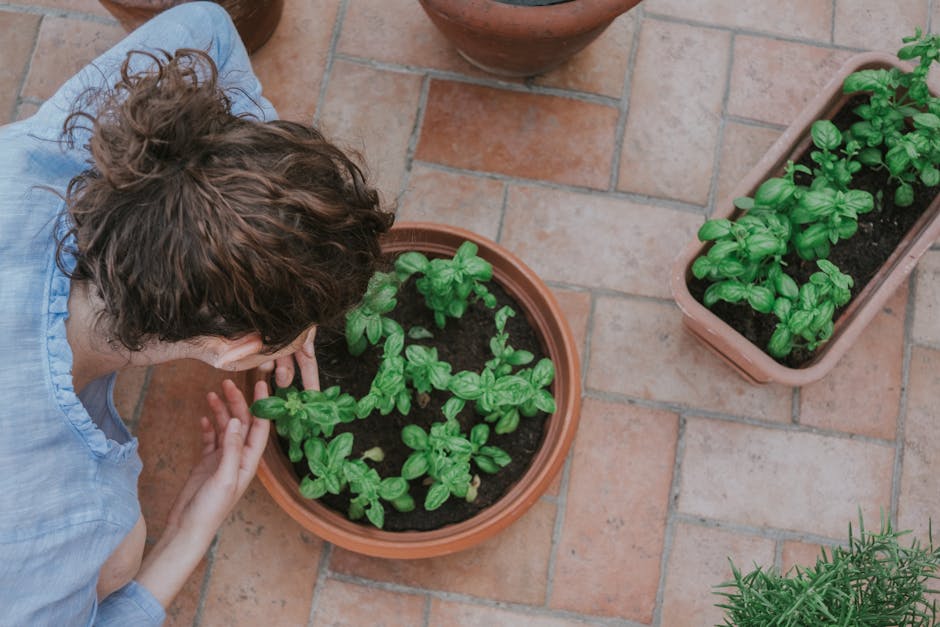Maximizing Your Patio Space: Growing a Herb Garden with Basil, Mint, and Thyme

Maximizing your patio space can be a fun and rewarding endeavor, especially when you decide to grow a herb garden. Imagine stepping out onto your patio and being greeted by the fresh, aromatic scents of basil, mint, and thyme. Not only do these herbs add a delightful fragrance to your outdoor space, but they also provide fresh ingredients for your culinary creations.
Starting a patio herb garden is a relatively simple task that doesn’t require a lot of space or gardening expertise. All you need are some pots, soil, and the herbs of your choice. Basil, mint, and thyme are excellent options for beginners due to their hardiness and versatility in the kitchen.
Basil, with its sweet and slightly peppery flavor, is a staple in Italian cuisine. It’s the star ingredient in pesto and a delightful addition to salads, pasta, and pizza. Basil loves the sun, so place your pot in a location where it can bask in at least six hours of sunlight each day. Water it regularly, but be careful not to overwater as basil doesn’t like to sit in soggy soil.
Next on our list is mint, a refreshing herb that’s perfect for summer drinks, salads, and desserts. Mint is a vigorous grower and can quickly take over a garden if not contained. Growing it in a pot on your patio is an excellent way to keep it in check. Mint prefers partial shade and moist soil, so place your pot in a location where it can get a bit of afternoon shade and remember to water it regularly.
Last but not least, we have thyme. This herb is a powerhouse of flavor and is used in a variety of dishes from soups and stews to roasts and vegetables. Thyme is a hardy plant that can withstand a bit of neglect, making it perfect for those who are new to gardening or have a busy schedule. It prefers full sun and well-drained soil, so place your pot in a sunny location
The Ultimate Guide to Cultivating Basil, Mint, and Thyme in Your Patio Herb Garden
Creating a patio herb garden is a delightful way to bring a touch of nature to your home, and cultivating basil, mint, and thyme is a great place to start. These herbs not only add a fresh, aromatic touch to your outdoor space, but they also offer a bounty of flavors for your culinary creations.
Starting with basil, this herb is a favorite among gardeners and cooks alike. It’s a versatile plant that thrives in warm weather and is easy to grow. To cultivate basil in your patio herb garden, you’ll need a sunny spot as basil loves six to eight hours of sunlight each day. Plant the seeds or young plants in well-draining soil and water them regularly, but be careful not to overwater. Basil plants prefer soil that’s slightly dry rather than too damp.
As your basil grows, you’ll notice it starts to flower. It’s important to pinch off these flowers as they appear because they can reduce the plant’s flavor. Regularly harvesting the leaves also encourages the plant to produce more, giving you a continuous supply of fresh basil throughout the growing season.
Next up is mint, a hardy perennial that’s known for its invigorating scent and flavor. Mint is incredibly easy to grow, but it can be a bit too enthusiastic, spreading quickly and taking over your garden if you’re not careful. To prevent this, it’s a good idea to plant mint in a container.
Like basil, mint enjoys a sunny or partially shaded spot. It’s not too fussy about the soil, but it does prefer it to be well-draining. Water your mint regularly, but again, avoid overwatering. Mint can handle a bit of neglect, so don’t worry if you forget to water it once in a while.
Harvesting mint is a breeze. Simply snip off the leaves as you need them. Regular harvesting encourages the plant to bush out, providing you with an abundant supply of mint leaves for your teas,
